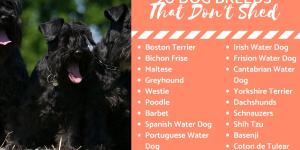Least Intelligent Dog Breeds

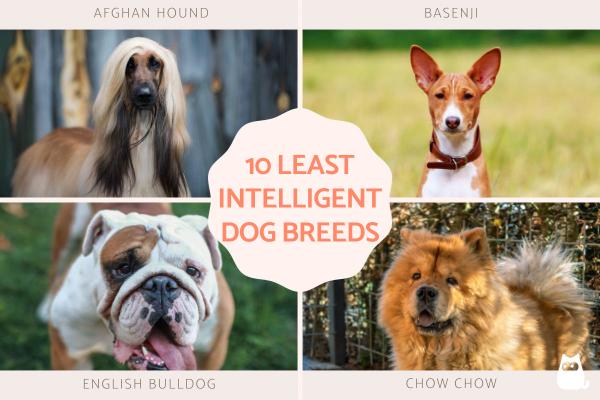
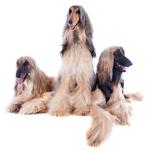
See files for Dogs
It's tempting to see some dogs as being the stupidest dog breeds. Whether they have a goofy face, awkward bodies or some other trait we find humorous, we may have prejudices against some dogs. This is not how dog intelligence is measured. It also doesn't mean any dog is stupid. To better understand, we need to look at how dog intelligence has been measured. The most influential study is by the psychologist Stanley Coren in this book The Intelligence of Dogs. While it is one of the most extensive and detailed studies evaluating canine intelligence according to breed, his methodology has been questioned since its 1994 publication.
Coren analyzed 131 breeds in total for his study and mainly based his results on work and obedience tests. Some of these fared better than others, resulting in a ranking system of each breed. AnimalWised shares the 10 least intelligent dog breeds according to this ranking. We find out what criteria has been used and why we may want to consider other types of dog intelligence.
- What makes a dog the least intelligent?
- Afghan Hound
- Basenji
- English Bulldog
- Chow Chow
- Borzoi
- Bloodhound
- Pekingese
- Beagle
- English Mastiff
- Basset Hound
- What does this list say about dog intelligence?
What makes a dog the least intelligent?
Stanley Coren's book The Intelligence of Dogs was first published in 1994. It was an extensive study which used data obtained from professional obedience judges in the United States of America to determine the most intelligent dog breeds. These data were based on various criteria for ranking the breed which included:
- Number of repetitions needed to learn a new command
- Success rate of obeying an already known command on the first attempt
- Consistency of performance
In addition to the specific judgment of the obedience judges, Coren collated this data to establish three distinct types of canine intelligence:
- Instinctive intelligence
- Adaptive intelligence
- Working and obedience intelligence
These categories are very important for understanding dog cognitive ability, but their focus is on a particular type of intelligence. Obedience is very important for working dogs and lacking it will make a dog unsuitable for certain roles. We rightly see a dog that is able to remember many commands and carry out complicated tasks as being intelligent. This does not necessarily mean that a dog which is disinterested in carrying out such tasks as being unintelligent.
It may be tempting to see the animals on our list as the stupidest dog breeds in the world. This is not the case and we cannot rightly call any dog ‘stupid’. Some may even argue that a more independent nature is a sign of another kind of intelligence. We need to keep this in mind as we look at the 10 least intelligent dog breeds according to Stanley Coren.
Afghan Hound
This breed of dog native to Afghanistan and occupies the last position on Stanley Coren's list of dog breed intelligence. They are considered a type of hound breed, a group to which many on our list of the least intelligent dog breeds belong. Specifically, they are a type of sighthound, a group which also contains Greyhounds, Whippets and similar breeds.
The reason why the Afghan Hound is considered the least intelligent dog breed is because they scored so poorly in obedience. They were only able to obey the first command they were given approximately 25% of the time. This means they are considered very self-willed.
Despite their friendly temperament at home, Afghan Hounds are quite independent, distrustful of strangers and somewhat stubborn when it comes to training. They require a high level of physical activity to stay healthy. As the photo depicts, they have a long coat which needs regular brushing to keep in condition. For all these reasons, adopting an Afghan Hound is only for those with the right levels of experience and time to devote to their care.
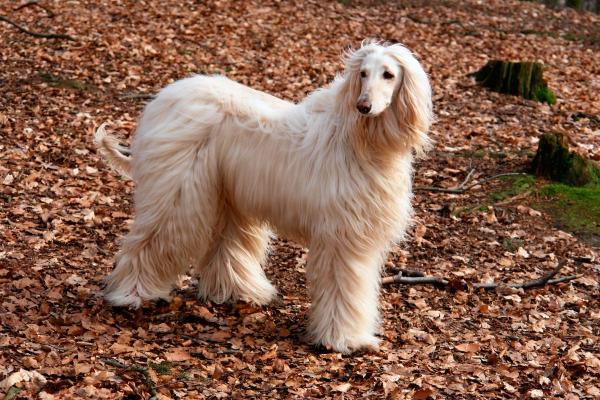
Basenji
One of the oldest dog breeds in the world, the Basenji is known as being the ‘dog that doesn't bark’. Instead of barking, they emit a noise which is often compared to an Alpine yodel. They are second on the list of the least intelligent dogs according to Coren. Originating from Central Africa, they were such an influence on ancient Egyptian culture that their appearance has been replicated in various tomb engravings and other designs.
In recent decades, the popularity of the Basenji as a companion dog has experienced a marked growth. This is largely due to its compact size, affectionate character and the fact that it is among the dog breeds that bark the least, making it easy to adapt to small apartments. They need daily exercise to expend their high energy level and must be trained from an early age, always with patience and good motivation to show a willingness to learn.
Basenjis being considered one of the dumbest dog breeds is something which has seen a lot of resistance from Basenji owners. Although a tongue-in-cheek response, users on some forums even suggest the Basenji put themselves on the list to trick us into underestimating them.
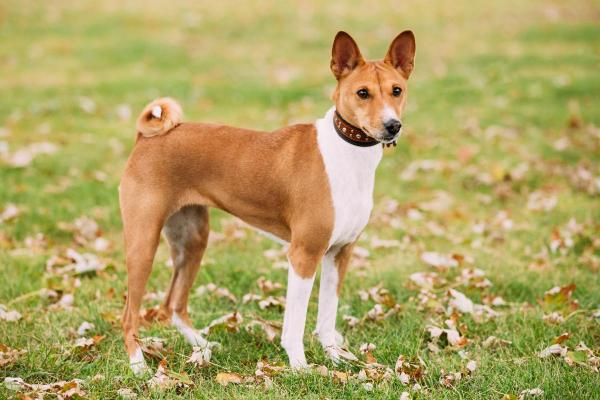
English Bulldog
In 77th place on the list of the most intelligent dog breeds, we find these types of English dog. Their unmistakable appearance can be seen in their short stature, very robust body and characteristic shortened snout, the latter seen in the photo below. Many of these traits are due to brachycephaly, a congenital trait which causes various health issues. For example, they have low exercise stamina due to associated breathing difficulties.
They were historically used in bullfighting, but are now much better known for being affectionate companion animals. They develop strong bonds of loyalty with their family, but they can also be quite stubborn. They are able to be trained, but they may need greater persistence and their training sessions will not last as long as some other breeds.
Anyone who has adopted an English Bulldog will know they are dogs with a strong personality. They can be stubborn and are not particularly eager to please their guardians. While this ranks them poorly on Coren's list, many guardians consider them to be very intelligent in their own way. In fact, they can be quite cunning, especially when it comes to getting their own way.
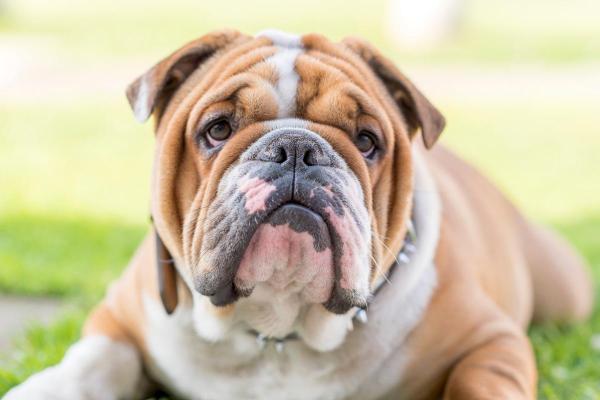
Chow Chow
These Chinese dogs are famous for their fluffy fur. They have a mane of thick hair around the neck and head which is why they are one of the dog breeds that most look like lions. You can't see in the photo, but they also have a black tongue. Although their popularity outside China has grown rapidly in the last number of years, they are an ancient and emblematic breed of their home country. Various legends follow this breed and they are particularly associated with Buddhist monasteries.
Despite having demonstrated their versatility as guard dogs and protectors for centuries, the Chow Chow is considered one of the least intelligent dog breeds. This is due to their poor performance during obedience and work tests. This is undoubtedly related to its strong, reserved and relatively docile character. This can hinder training sessions and slow the learning process.
However, this doesn't necessarily mean they are a dumb dog. Chow Chows simply have a strong character. This means they need to be educated from an early age to encourage a stable temperament and best ensure positive interactions with others. To help with this process, check out our article on socializing puppies and adult dogs.
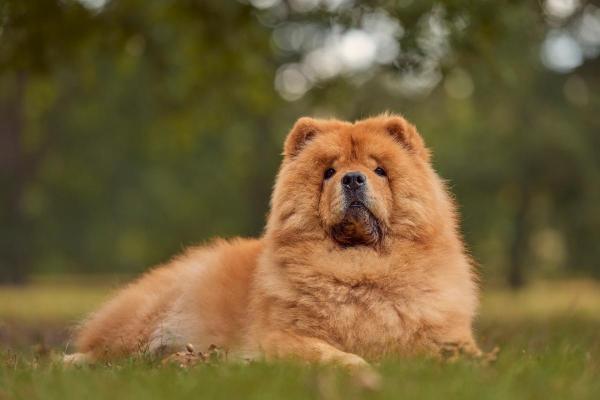
Borzoi
Also known as the Russian Hunting Sighthound, the Borzoi is less well known outside of Russia than some of the others dogs on our list. Little is known about its exact origins, but its existence has been well documented since the 11th century, when three Russian Greyhounds accompanied Anna Yaroslavna, daughter of the Grand Duke of Kiev, on her trip to France to marry Henry I. In fact, the breeding of the Borzoi was historically linked to the Tsarist monarchy, which is why the breed almost became extinct after the fall of Tsarism.
These large Russian dogs were noted for their agility and hunting skills, having a high energy level and a marked hunting instinct. Their temperament can vary greatly depending on the upbringing they receive. Generally speaking, the Borzoi is a dog that is loyal to its own family, but is not overly attached, retaining a great sense of independence. It is also distrustful of strangers and can react impetuously without adequate socialization.
Along with the Afghan Hound, all of this makes the Borzoi more difficult to train than other types of greyhound. Their ownership is only recommended for more experienced owners.
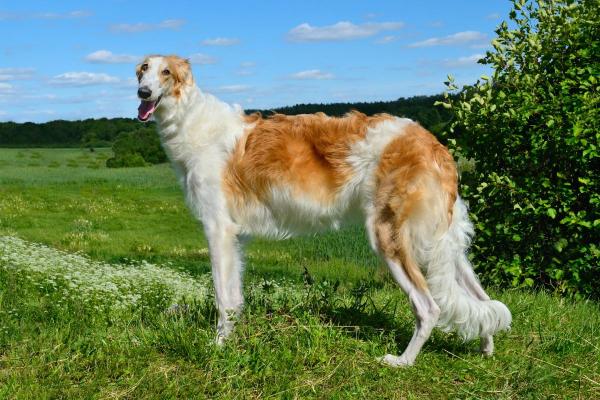
Bloodhound
Less commonly known as the St. Hubert Hound, this is a very old breed whose origins are little known. They are considered to be native dogs of Belgium and to descend from the ancient Chien de Saint-Hubert, which are a common ancestor of most hunting and tracking dogs. They are especially linked to Basset-type dogs. It is believed the appearance and morphology of the modern Bloodhound were strongly influenced by selective crosses with Bullmastiffs.
Although it has performed poorly in the working and obedience tests carried out by Coren, the Bloodhound is one of the best sniffer dogs. This is because it has the largest number of olfactory receptors in its nose (around 300 million), allowing it to follow tracks over great distances, even several weeks after they occur. Bloodhounds are invaluable to various security forces when it comes to searching for missing persons. Anyone who has been helped by a Bloodhound in this way is unlikely to see them as one of the stupidest dog breeds.
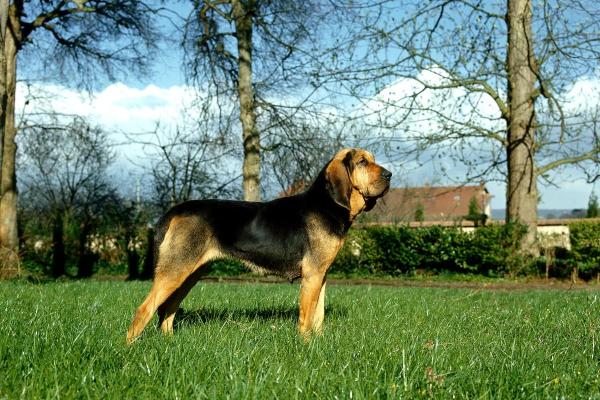
Pekingese
Another ancient dog breed with Asian roots is the Pekingese. Due to their independent and tenacious temperament, they tend to show a poor performance in obedience and work tests. Despite their small size, the Pekingese dog stands out for having a very brave and protective character. They will not hesitate to defend their family when they perceive any threat.
This accentuated instinct of protection and loyalty to its own makes these dogs particularly distrustful and reserved with strangers. They also have some difficulty interacting with other dogs and can develop possessive behaviors in adulthood, so it is key to redouble attention to their early socialization.
Regarding intelligence, for many years, the Pekingese dog has been burdened with a bad reputation for being too stubborn or even ‘dumb’. Although not an easy breed to train, the Pekingese can learn how to behave properly inside and outside the home. As long as its educational process begins in its first months of life and is based on proven safe and effective methodologies, the Pekingese can be trained. We must exclude any practice of physical and emotional abuse for both effective results and a stable temperament.
At AnimalWised, we recommend the correct use of positive reinforcement to reward a dog for its achievements, encouraging the assimilation of new commands and increasing adherence to training. Learn some of the most common mistakes when scolding a dog to learn more about what not to do when training your animal.
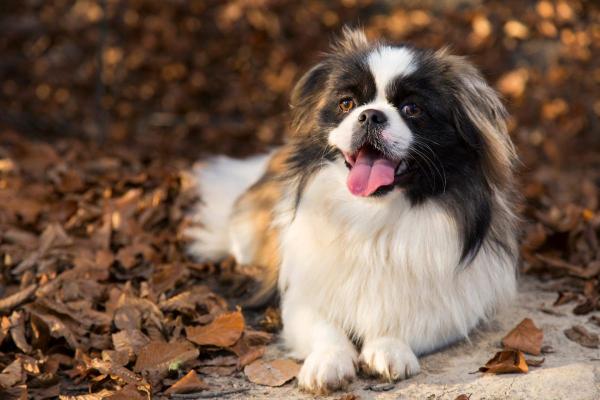
Beagle
Seeing this breed on the list of the least intelligent dogs will be met with surprise and bewilderment by Beagle owners all over the world. Its poor performance in obedience and work tests may be related to its very restless and impulsive nature, something which reduces its ability to concentrate and can slow down its learning. This may make it necessary to repeat a large number of commands for a new command to be fully assimilated.
It is also important to note that Beagle temperament is strongly influenced by the genetic heritage received from their hound ancestors. Their years of training as hunting dogs also greatly influence this nature. The result is often a stubborn dog with a strong streak of individuality. Beagles can make great companions, but their stubbornness and independence can make them difficult for some guardians.
If you intend on becoming the guardian of a Beagle, you will need start working on education and socialization from the moment they arrive at home. Ensuring they have suitable daily exercise and providing a balanced diet are also very important in Beagle care. This is because they are a voracious breed which can be prone to obesity.
Learn about other dog breeds prone to obesity with our related guide.
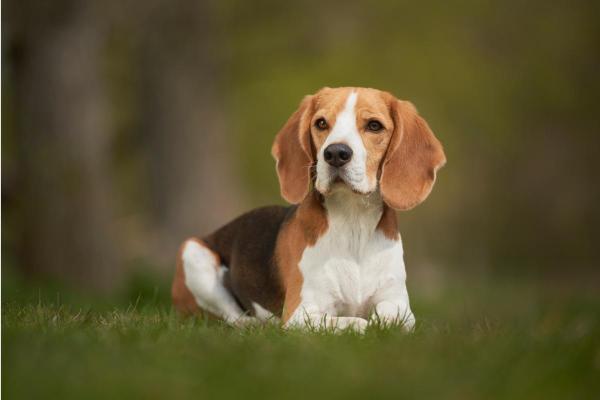
English Mastiff
Also known simply as Mastiff, the English Mastiff is one of the largest Mastiff-type dog breeds. It is tied with the Beagle as being the 8th least intelligent dog breed according to Coren. Of British origin, it is estimated this canine breed was developed during the 6th century BC and that its ancestors arrived in Europe by the hand of the Phoenicians. Once on British soil, they were widely used in combat arenas due to their strength and physical endurance, but later they stood out as guard and protection dogs. The photo below shows their large size.
The character of the modern mastiff is quite different from its ancestors, as selective crosses were carried out to make them more reliable and less aggressive. The English mastiff we know today is a dog that is extremely loyal to its guardians and a great companion for children, whom it will protect with great courage. Their behavior can change radically when they encounter strangers and their protective instinct can lead to unpredictable actions if they perceive any threat.
Such unpredictability in a breed requires high levels of socialization and training. Coupled with obedience issues, it is important to know this dog is not for everyone. They should ideally be kept in rural areas or places with a lot of space to explore.
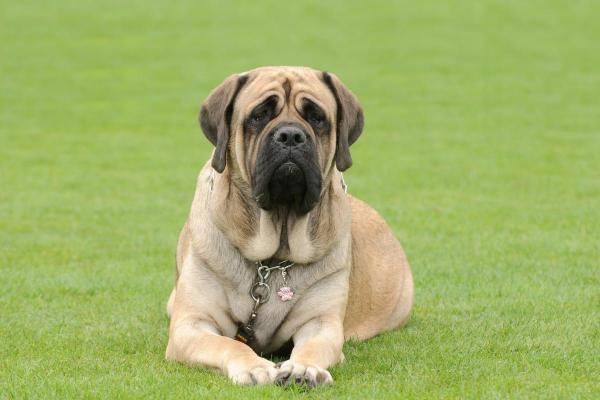
Basset Hound
Rounding off our list of the least intelligent dogs is perhaps the most well-known breed of hounds. Originating in France, some claim they are descended from the Bloodhound. Others claim the Basset Hound was developed from selective crosses between French miniature hounds, something which would better explain their short legs.
Beyond their unmistakable morphology, these dogs are highly valued for their excellent tracking skills. In fact, the breed was originally developed for hunting, but quickly gained popularity as a companion dog due to their unique appearance, as well as their affable and patient temperament. Despite being great hunters, they are not a breed which is greatly predisposed to training. When systematically exposed to counterproductive methods such as scolding and punishment, the Basset Hound can become disobedient, destructive and even aggressive.
Check out our related article if you have difficulty telling the difference between a Beagle and a Bloodhound.
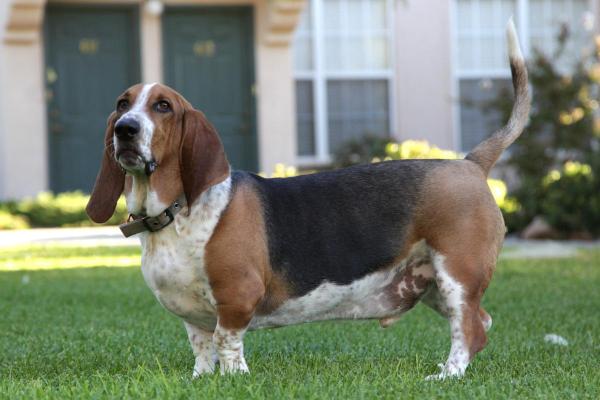
What does this list say about dog intelligence?
It is very important that we view this list of the least intelligent dog breeds in context. While the focus is on obedience and working behaviors can provide great insight into canine ability, these are not the only types of intelligence in dogs. Other studies have focused more on issues such as problem-solving ability and interactions with strangers[1].
Further research doesn't necessarily contradict Coren's findings, but they may change the context. For example, the breeds on Coren's list seem to be biased toward herding and other working dogs. Hounds seem to be considered the least intelligent group overall, but this could be explained more by independence rather than lack of intelligence. Their intelligence tends to be more adaptive, not necessarily something which best lends itself to working.
Another important factor is that much of this research is based on personal observation. Whether we like to admit it or not, many of us have certain biases when it comes to dog breeds. The means of assessing dog intelligence is limited and further research is required to have a better picture.
Despite faring differently in various types of evaluations, we cannot say any dog breed is dumb or stupid. We can say that dog intelligence can be evaluated in different ways. This is important for any guardian who wants to assess their own dog's intelligence. We also need to be considerate of how the level and type of care we provide can influence a dog's behavior.
Learn more about how we categorize certain breeds with our article sharing the dogs most prone to separation anxiety.

If you want to read similar articles to Least Intelligent Dog Breeds, we recommend you visit our The least... category.
1. Junttila, S., Valros, A., Mäki, K., Väätäjä, H., Reunanen, E., & Tiira, K. (2022). Breed differences in social cognition, inhibitory control, and spatial problem-solving ability in the domestic dog (Canis familiaris). Scientific reports, 12(1), 22529.
https://doi.org/10.1038/s41598-022-26991-5


